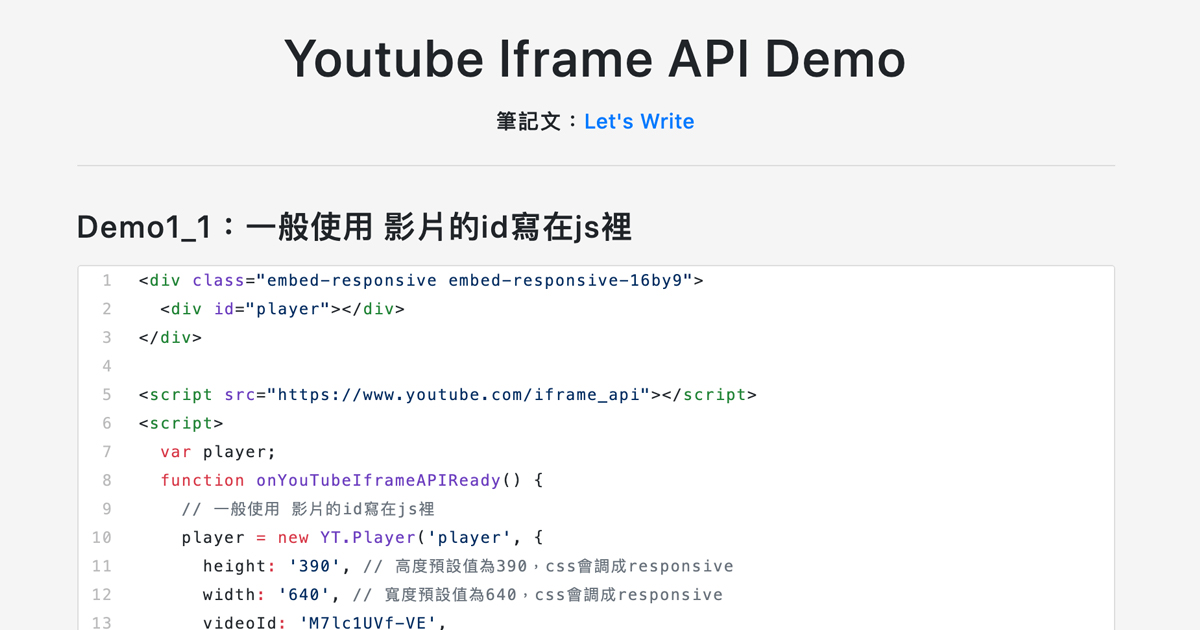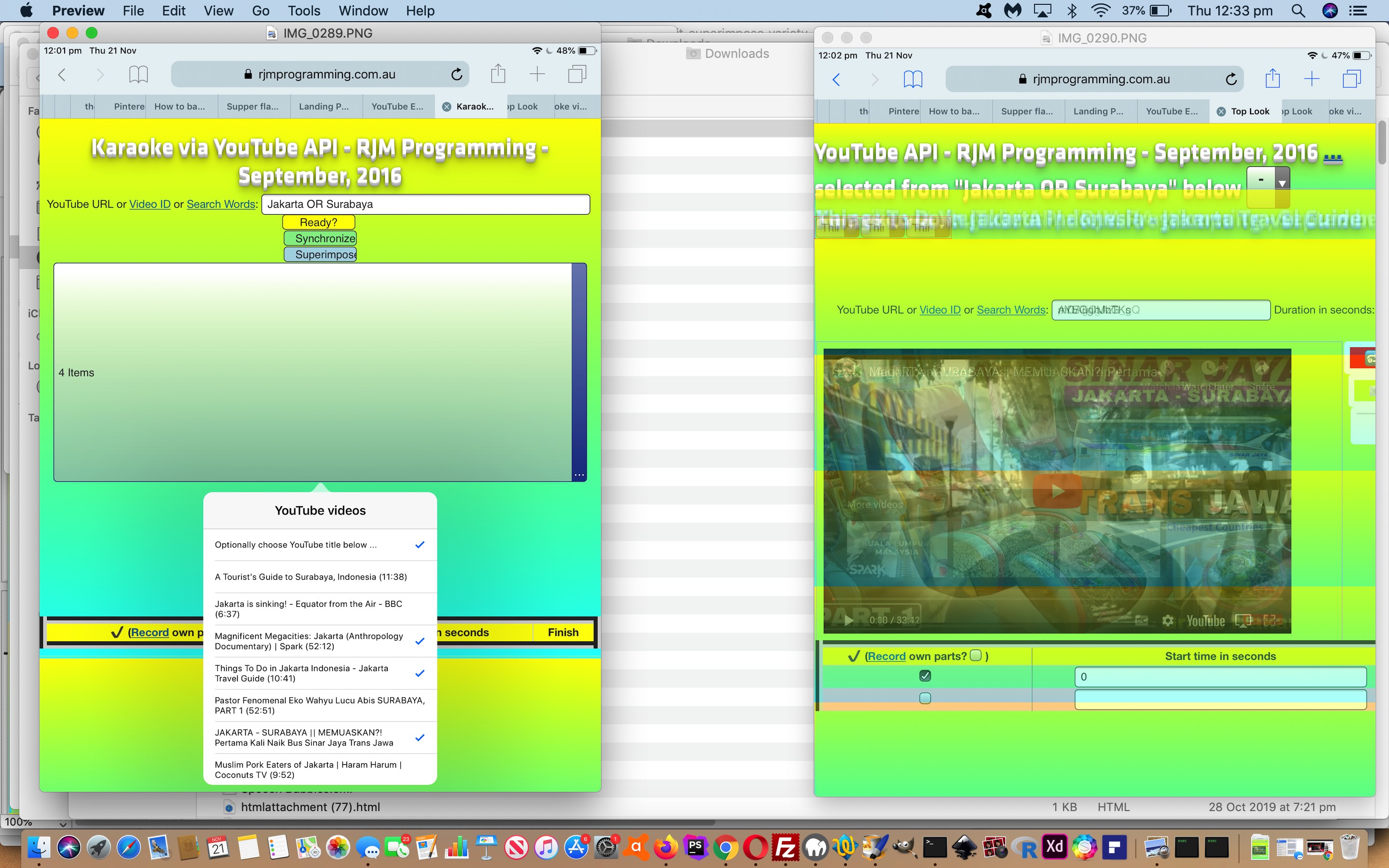

Then, if and when the video enters the “unstarted” state, if the flag contains a value of true, you’ll know that it’s a new video that just started playing. This Vue plugin makes it easy to integrate the YouTube Iframe API into your Vue 3 app. When a video starts playing, set your flag to true. When I use Iframe embed (without Iframe API - with ), it works, ads are not displayed, which I want. In JavaScript, omitting the “var” keyword will append it to the global window namespace. In my project, I am using YouTube video embeds (not my videos) and I want them to not display ads. Declare a global variable to act as a flag. Perhaps you’d like to change the page in which the video is embedded in order to display some pertinent information about the video. Replacing the Page Based on Video SelectionĪt the end of a video, the YouTube player displays related videos within the embed iFrame. Meanwhile, event names like “onYouTubeIframeAPIReady” help identify it as part of the IFrame API. The Live Streaming API is actually comprised of components of the YouTube Data API and the YouTube Content ID API. Using the API, you can schedule events (broadcasts) and associate them with video streams, which represent the actual broadcast content. For one thing, the presence of an SWFObject would be a dead give-away to the JavaScript API. The YouTube Live Streaming API lets you create, update, and manage live events on YouTube. Recommended for you YouTube Player Demo This page. Google engineers monitor and answer questions with the youtube-iframe-api tag. It’s easy to think that the JavaScript API is alive and well because the IFrame API also uses JavaScript! However, the two APIs do differ in syntax. IFrame API We support the YouTube IFrame API on Stack Overflow. This approach provides more flexibility than the previously available APIs since it allows YouTube to serve an HTML5 player rather than a Flash player for mobile devices that do not support Flash. …unlike the Flash and JavaScript player APIs, which both involve embedding a Flash object on your web page, the IFrame API posts content to an tag on your page. Flash and JavaScriptĪccording to YouTube, the prevailing factor in their decision to go with the IFrame API was that, Using the YouTube Iframe API, this is pretty easy to achieve. In today’s follow-up, well take a look at some of the ways in which developers commonly respond to various events. There’s an increasing trend of adding full-width (possibly full-height) YouTube video covers with autoplay. If the player displays controls, it must be large enough to fully display the controls without shrinking the viewport. Embedded players must have a viewport that is at least 200px by 200px. In the Respond to Embedded YouTube Video Events tutorial, we learned what events the API exposes. This page demonstrates the YouTube Player API's functions. If it has, we're going to trigger the modal to open. We're going to use those two values to check if more than 95 of the video has elapsed. That leaves the IFrame Player API as the goto approach for achieving a more granular control over a video’s playback and events. The YouTube API makes a lot of helper functions available. Well, guess what as of January 27, 2015, both the YouTube JavaScript and ActionScript 3.0 Player API (also known as the YouTube Flash API), were officially deprecated. In that tutorial, I made a passing reference to the Flash player. The Youtube IFrame API allows you to embed a YouTube video player (using an IFrame to contain the video) on your website and control the player using their. Therefore, all function calls are queued and replayed only when a player is ready.In the There’s More than One Way to Play Embedded YouTube Videos! article, I described several different ways to go about embedding YouTube videos in a web page. Alternatively, element can be a selector string, which will be passed.

This promise is resolved only when the player has finished loading and is ready to begin receiving API calls (onReady). The player will take the place of the HTML element element.

The difference is that the function body is wrapped in a promise. What is the difference between other plugins? This way, you are no longer constrained to delegating video control to YouTube or play videos locally (by loading heavy video files onto your website). It provides a simple layer for you to use your imagination while over the YouTube IFrame Player API. The Youtube IFrame API allows you to embed a YouTube video player (using an IFrame to contain the video) on your website and control the player using their JavaScript API that works across IFrames. Vue-youtube is a simple component for a powerful API. Antério Vieira introduced a Vue Js Wrapper of YouTube IFrame Player API (YIPA) called Vue-youtube.


 0 kommentar(er)
0 kommentar(er)
